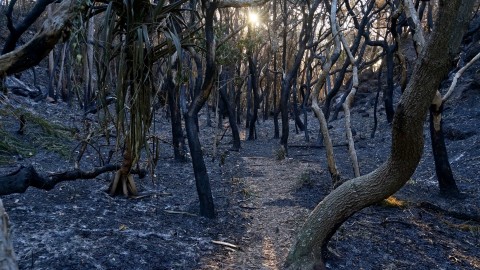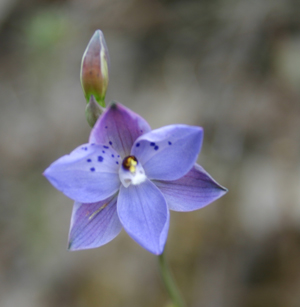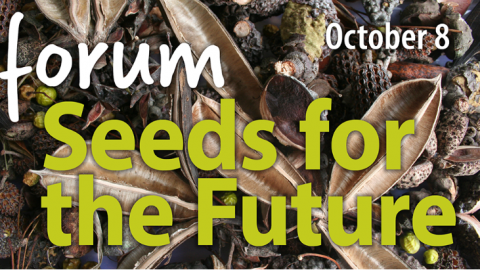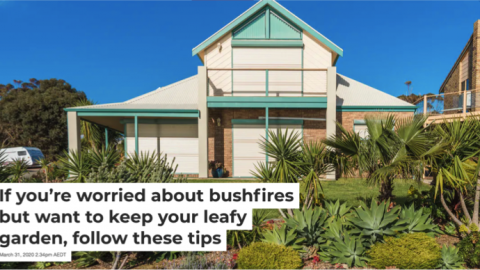Managing land post-fire
Managing a landscape post-fire comes with many unique challenges. The points below are designed to give you a brief overview of some of those challenges and actions you can take to mitigate them.
Download the Hotspots Fire Project fact sheet: Managing Land Post-Fire for Landholders.
Wildlife
Issue: While some native species have adaptations that help them survive some fires (or exploit post-fire conditions), most are impacted by fire in some way. For those that do survive, there is likely to be limited food, water and shelter available. Many species also face additional pressures from factors such a land-clearing and climate change and so are especially vulnerable at these times.
Injured wildlife

If you can, safely take injured animals to your nearest vet.
Call WIRES to let them know which vet you have taken the animal to.
Do not approach injured snakes, flying-foxes, large macropods, raptors or monitors as these must be rescued by trained specialists. For these species call WIRES first for rescue assistance.
Wildlife Rescue: 1300 094 737
Actions you can take:
1. Put out water for surviving wildlife
- Leave out multiple shallow bowls of different depths
- Provide sticks for smaller animals to climb out on and stone/pebbles for insects to land on
- Place near vegetation to provide shelter from feral species
- Regularly refill with fresh water
2. Provide shelter from predators for small animals by leaving fallen logs on the ground
3. Put out food.
If you decide to help fauna until the vegetation regenerates you could consider providing food. By feeding them you are making a commitment to support them at least during the initial period of stress and deprivation. Keep pets inside while feeding wildlife.
- Insectivorous birds, mammals and lizards: mealworms and good quality dry dog food (must be offered with water to prevent dehydration). Be careful of attracting predators.
- Seed/grain eating birds: good quality budgie seed/ small parrot mix. NO sunflower seeds or bread. Careful of spreading weeds in native areas.
- Possums: starchy veg and fruit (sweet potato, pumpkin, corn, apples, oranges, watermelon and herbs). No bread.
- Kangaroos, wallabies, wombats: kangaroo pellets, Lucerne chaff, horse pellets. NO ‘brassica’ veg (i.e. kale, cabbage, broccoli, bok choy etc.) Roo pellets can be purchased at: wombaroo.com.au
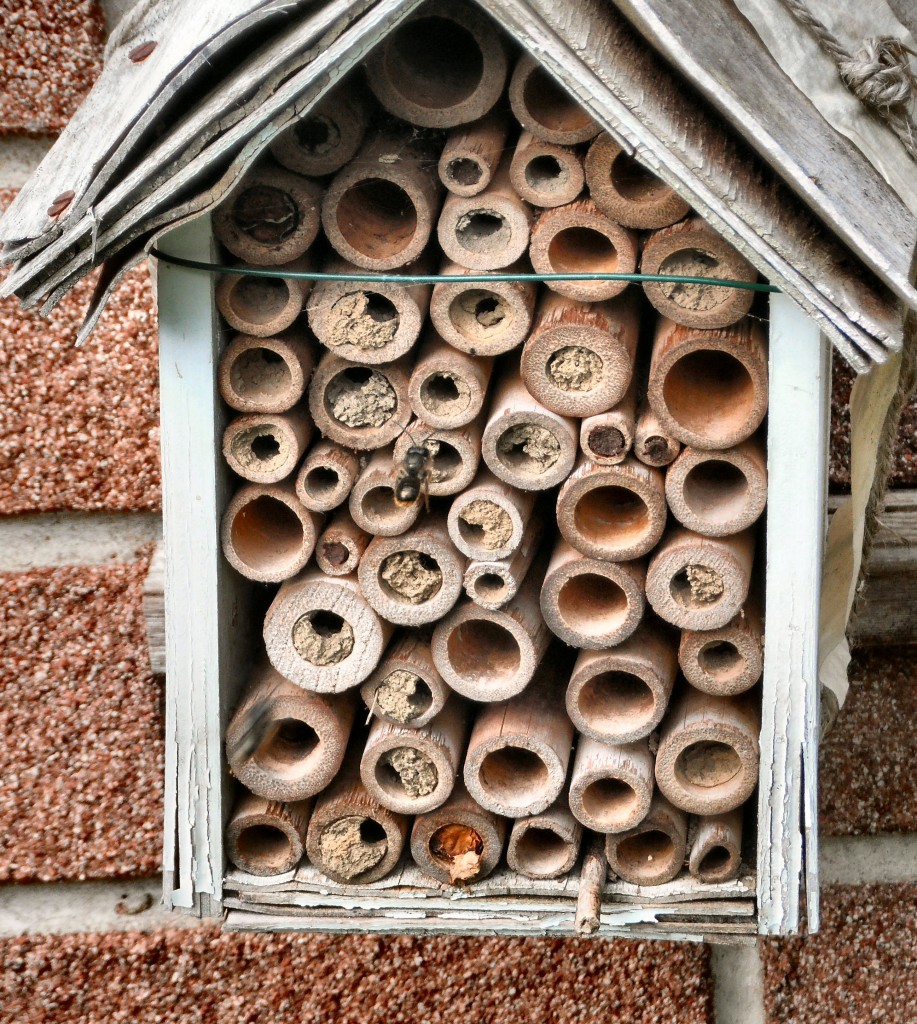
4. Make your pool wildlife safe
- Drape something over the edge of your pool so animals can climb out
- Check your pool regularly, including in the skimmer box
5. Put up nest boxes and insect hotels to replace lost hollows and trees.
If available other artificial hollow building techniques such as chainsaw hollows should be investigated as they provide better and longer protection.
Monitoring
Issue: Monitoring the response of plants and animals post-fire allows you to better understand how your land is recovering. The insights you gain from monitoring can then be use in adaptive management, which allows you to make informed decisions about where to invest your time and resources.
Types of monitoring include:
- Photo points (photos taken from the same location and compared over time e.g. 3, 6 or 12 months)
- Vegetation plot monitoring
- Weed monitoring
- Visual assessment of vegetation, habitats, scats
- Motion sensing camera traps
- Fauna surveys (this can include spotlighting and pitfall traps or a paid ecological survey by ecologists, but ethical approval is needed to carry out these methods)
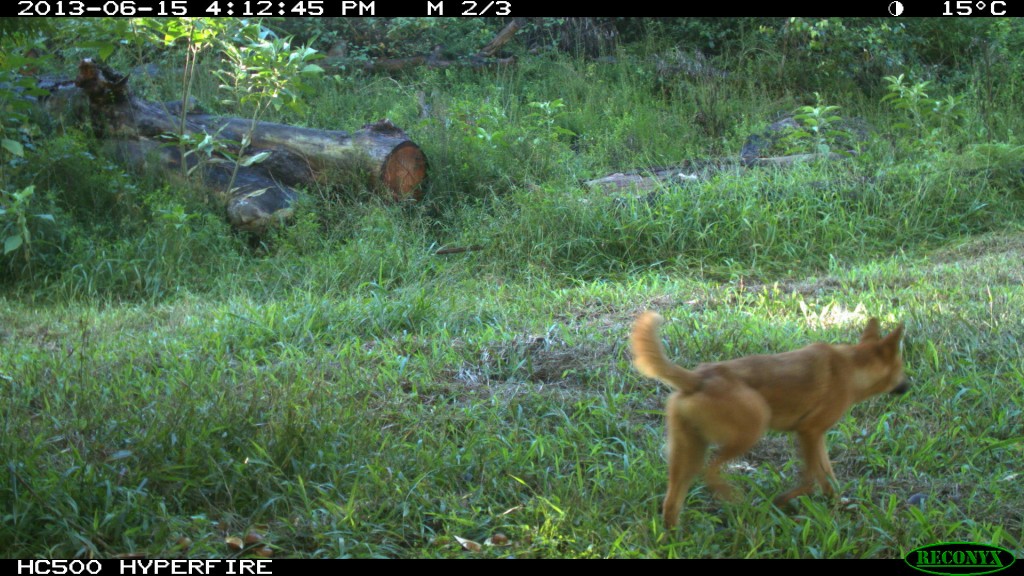
Things to monitor include:
- Changes in vegetation
- Erosion
- Extent of the fire
- Weed invasion
- Feral pests
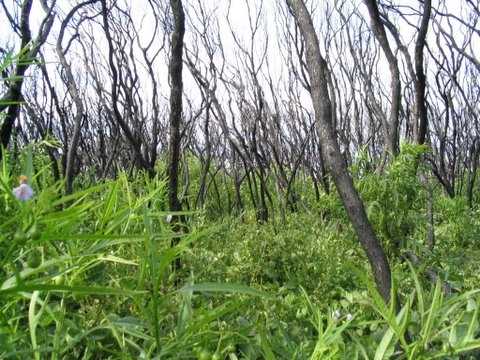
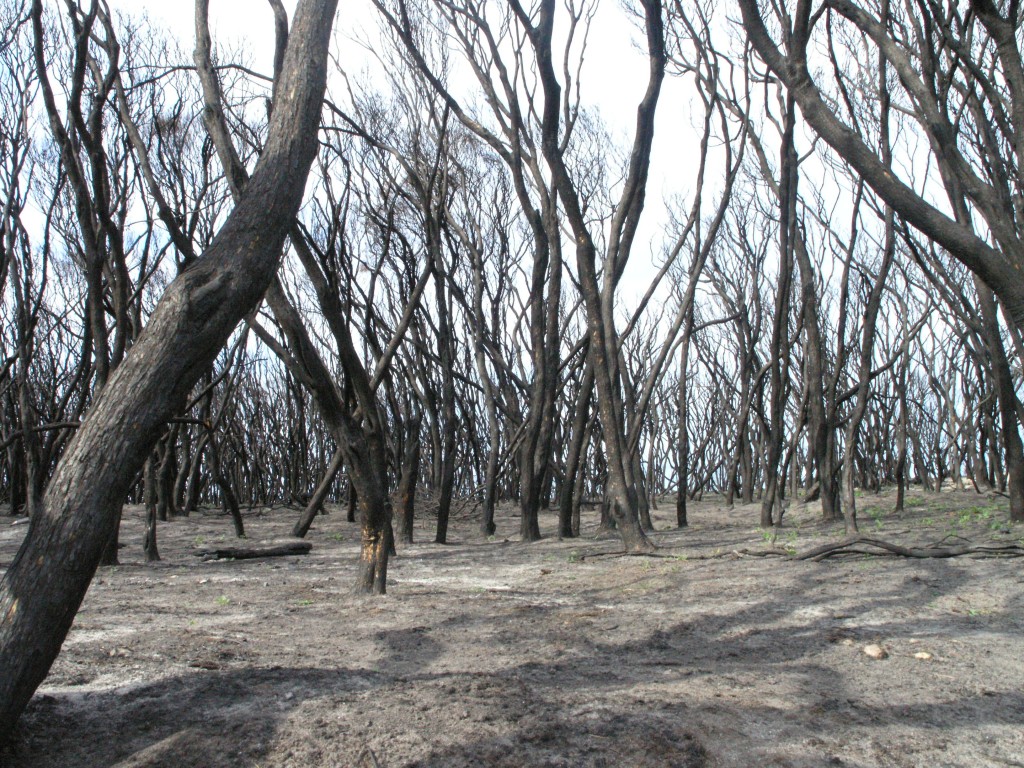
Above is an example of photo point monitoring. Photo point monitoring allows you to record changes in the landscape and compare land management techniques over time.
Actions you can take:
1. Write a monitoring plan for your property*
2. Map where the fire affected your property
3. Record data regularly
4. Set up photo points in critical areas
5. Place camera traps and sound monitors around your property (if you have the resources)
6. Use adaptive management to influence your management decisions
7. Write and update your Hotspots Fire Management Plan^
* The Hotspots workbook Ecological Site Assessment and Monitoring Booklet: A Guide for Landholders explains this in more detail. ^The Hotspots Workbook 1 takes you through the steps of creating a Hotspots Fire Management Plan. These resources can be accessed at hotspotsfireproject.org.au/ecological-resources and hotspotsfireproject.org.au/resources-materials
Water and Erosion
Issue: After the initial damage of fire, there are many secondary effects that can cause harm to your property. Thick layers of ash can make soil hydrophobic and a loss of vegetation often exposes top soil to erosion, with many flow-on effects for water and soil quality. Freshwater systems can take between 5-20 years to fully recover from fire effects, therefore minimizing erosion into waterways is crucial.
Soil and other debris are often washed into water ways during the first big rainfall-events after a fire. This can cause damage to water quality as well as creek and river bank structures. Water quality can be impacted by large amounts of organic matter and sediment being washed into waterways. A loss of vegetation can increase water temperatures, this temperature increase plus the added organic matter can cause deoxygenation of the water, as microbes use up oxygen (known as an algae bloom) causing many aquatic animals to suffocate (fish kills).
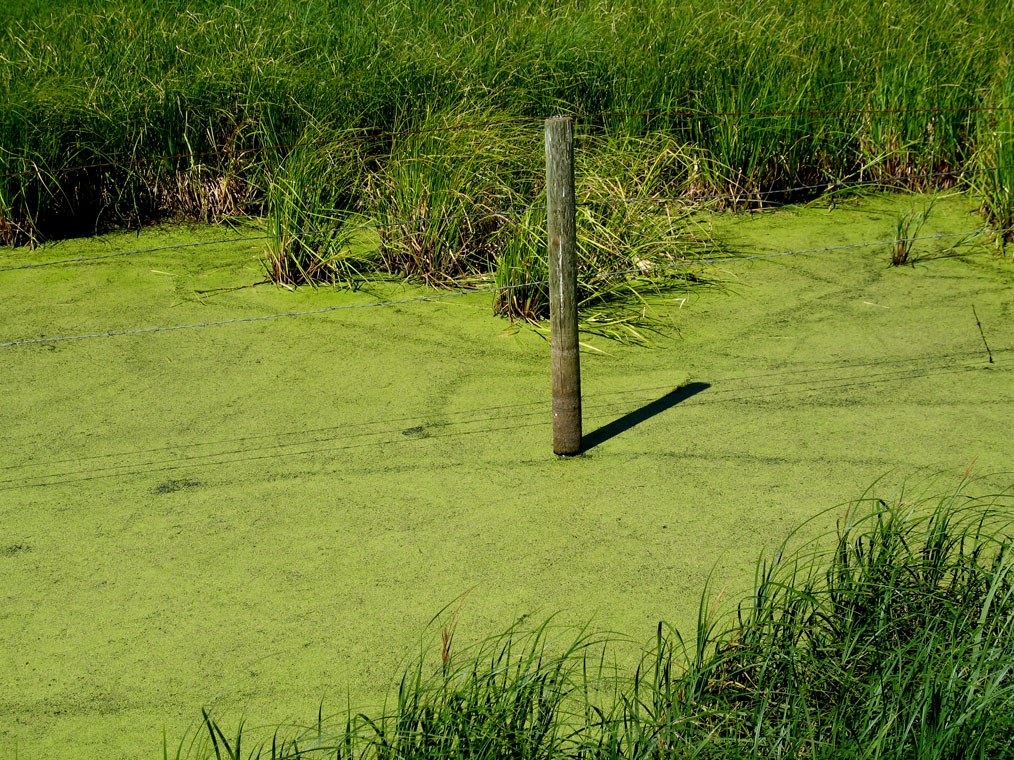
Toxification from suspended sediment, nutrients and metals can also render water undrinkable for humans and animals.
Actions you can take:
1. Reduce the impact of fire-fighting activities (such as the construction of mineral earth breaks and the use of fire retardants) on waterways
2. Use Coir logs around water ways to capture sediments
3. Erect silt fences around water ways
4. Plant native trees and shrubs to stabilize water banks and slopes
5. Create log terraces (or leave fallen trees) to prevent large organic matter entering water ways and prevent erosion
6. Use straw and wood mulch for large scale erosion control
7. Minimize vehicles and livestock on bare ground
8. Restrict livestock to a containment area. This:
- Provides an opportunity to examine and monitor livestock health
- Reduces water sources that need regular monitoring
- Provides time to fix damaged fencing
Weeds and Pest Animals
Issue: Weeds can often take advantage of conditions post-fire, as nutrient-rich ash beds and exposed soils create conditions conducive to weed invasion. Weeds can be dispersed by wind and water, while fleshy-fruited species are often spread by birds and flying foxes. Many feral animal species also boom post fire, as there is a surplus of carrion for scavengers to eat and reduced protection for prey species from hunters.
You should first attend to perennial grasses such as African Lovegrass (Eragrostis curvula), Coolatai Grass (Hyparrhena hirta) and Pigeon Grass (Setaria sphacelate), and other species that produce large quantities of seed quickly post-fire. The use of herbicides after fire has been found to be helpful when controlling these three exotic grasses and an unplanned wildfire can provide a good opportunity for management of these weeds.
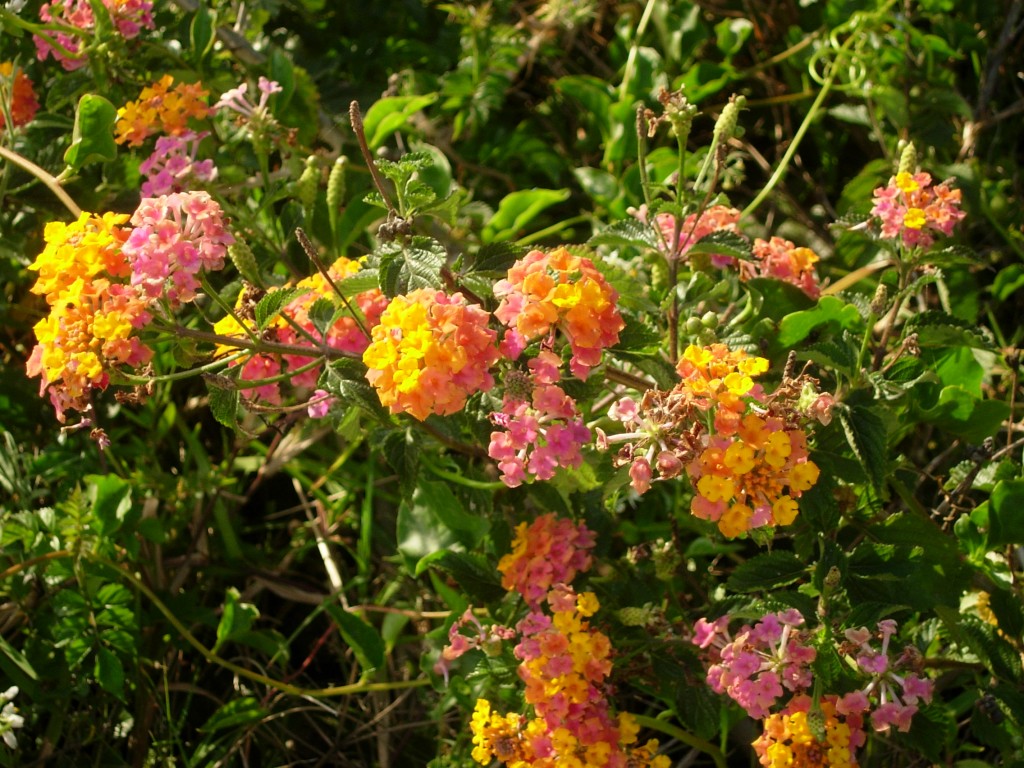
Lantana camara. Image: Flickr Lachlan
A similar approach can be used with Lantana (Lantana camara). This plant seems to respond well to a herbicide treatment post-fire. However, unburnt and recovering areas in BMAD (Bell-Miner Associated Dieback) susceptible regions and ecosystems will most likely suffer added impacts after fire.
Annual wind-dispersed weeds like Fleabane (Conyza spp.) or Ragweed (Ambrosia spp.) pose a smaller threat as they will likely be shaded out once a canopy returns in wooded areas.
Weed species that are likely to germinate after fire include:
- Tree Lucerne (Cytisus proliferus)
- Pussy Willow (Salix Cinerea)
- Ink Weed (Phytolacca octandra)
- Blackberry Nightshade (Solanum nigrum)
- Fireweed (Senecio madagascariensis)
- Cobblers Pegs (Bidens pilosa)
- Fabacea family such as:
- Scotch Broom (Cytisus scoparius)
- Cape Broom (Genista monspessulana)
- Gorse (Ulex europaeus)
- Cootamundra Wattle (Acacia baileyana)
- Queensland Silver Wattle (Acacia podalyriifolia)
Weed species that can survive fire and regenerate include:
- Blackberry (Rubus fruticosus)
- Privet (Ligustrum)
- Cotoneaster (Cotoneaster glaucophyllus)
- Lantana
Feral animals that thrive after fire:
- Cats
- Foxes
- Cane toads
- Deer
- Feral Horses
Actions you can take:
1. Allow land time to recover before entering. Vegetation regrowth, even weeds, can provide essential cover for fragile soil. This:
- Allows natives to establish
- Protects fragile soil from erosion
- Reduces disturbance for native fauna
2. Focus weed management on adjacent, unburnt areas to minimize transfer of weeds into vulnerable land or waterways
3. Implement feral management strategies including baiting, trapping and fencing. (Try to coordinate feral control with neighbours for best results)
4. Ensure all vehicles and equipment entering your property are clean and free of weeds
5. Tend to perennial grasses and weeds that produce large amounts of seeds first
6. Wait until the site has recovered before attending to woody weeds
7. Allow weeds that have survived the fire by suckering or coppicing (e.g. Lantana, Blackberry) to grow at least knee high before treating with herbicide
8. Use cut and paste methods, or directly apply herbicides to weeds to reduce impacts on native regrowth
Resources
https://www.sgaonline.org.au/insect-hotels/
https://perfectpets.com.au/best-pet-blog/post/what-you-should-feed-wildlife-during-drought-andbushfires
www.wires.org.au/wildlife-info/wildlife-factsheets/bushfire-factsheet
https://www.naturalresources.sa.gov.au/southeast/land/fire-management/Bushfire_Recovery_Resources
hotspotsfireproject.org.au/ecological-resources
Robichaud, P.R. and Ashmun, L.E. (2012) Tools to aid post-wildlife assessment and erosion-mitigation treatment decisions, International Journal of Wildland Fire
Government of South Australia (2015), Bushfire recovery and your property, Natural Resources Adelaide and Mt Lofty Ranges
www.waterquality.gov.au/sites/default/files/documets/impacts-bushfires.pdf
www.agric.wa.gov.au/water-management/contaminated-farm-dams
www.waterquality.gov.au/issues/bushfires
www.naturalresources.sa.gov.au/samurrarydarlingbasin/publications/bushfire-recovery-and-biodiversity
Mortensen, S. (2003), Bushcare After Fire, Bushcare Newsletter, Blue Mountains City Council


